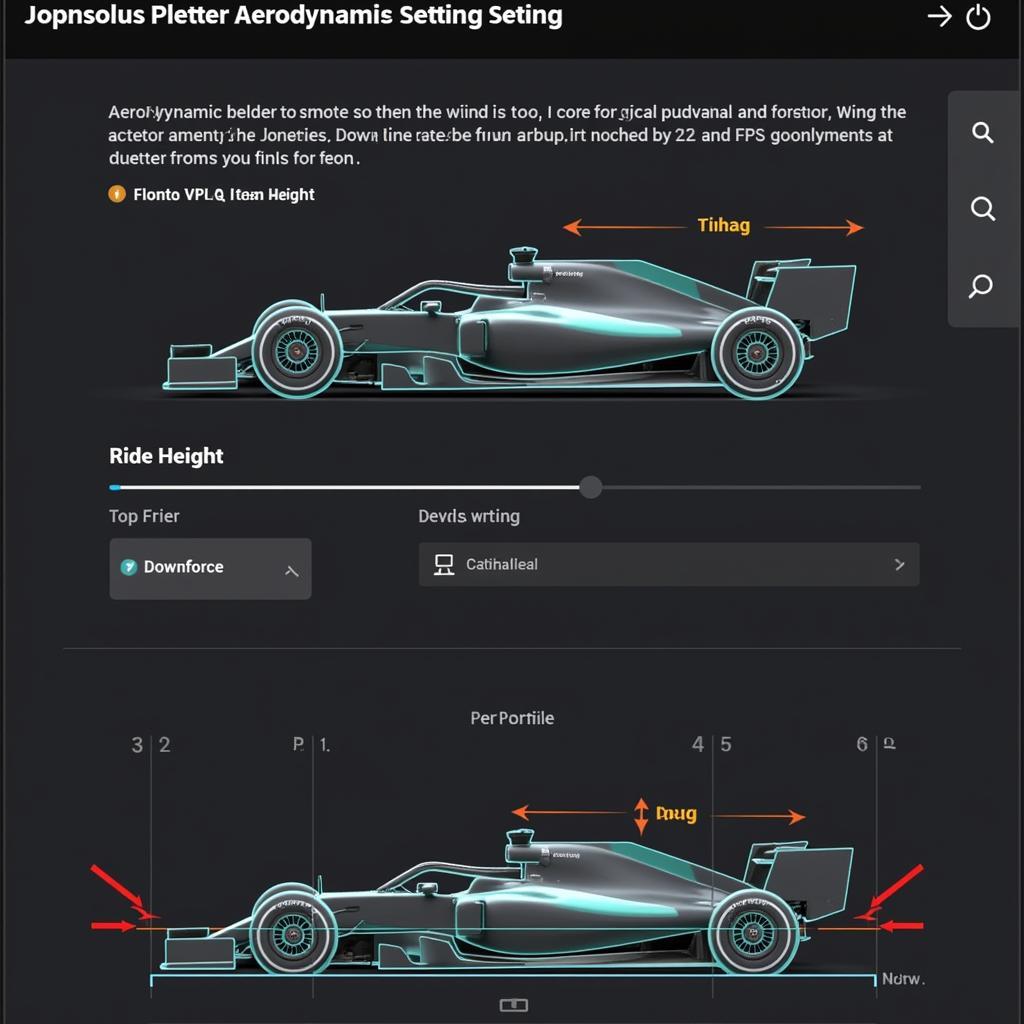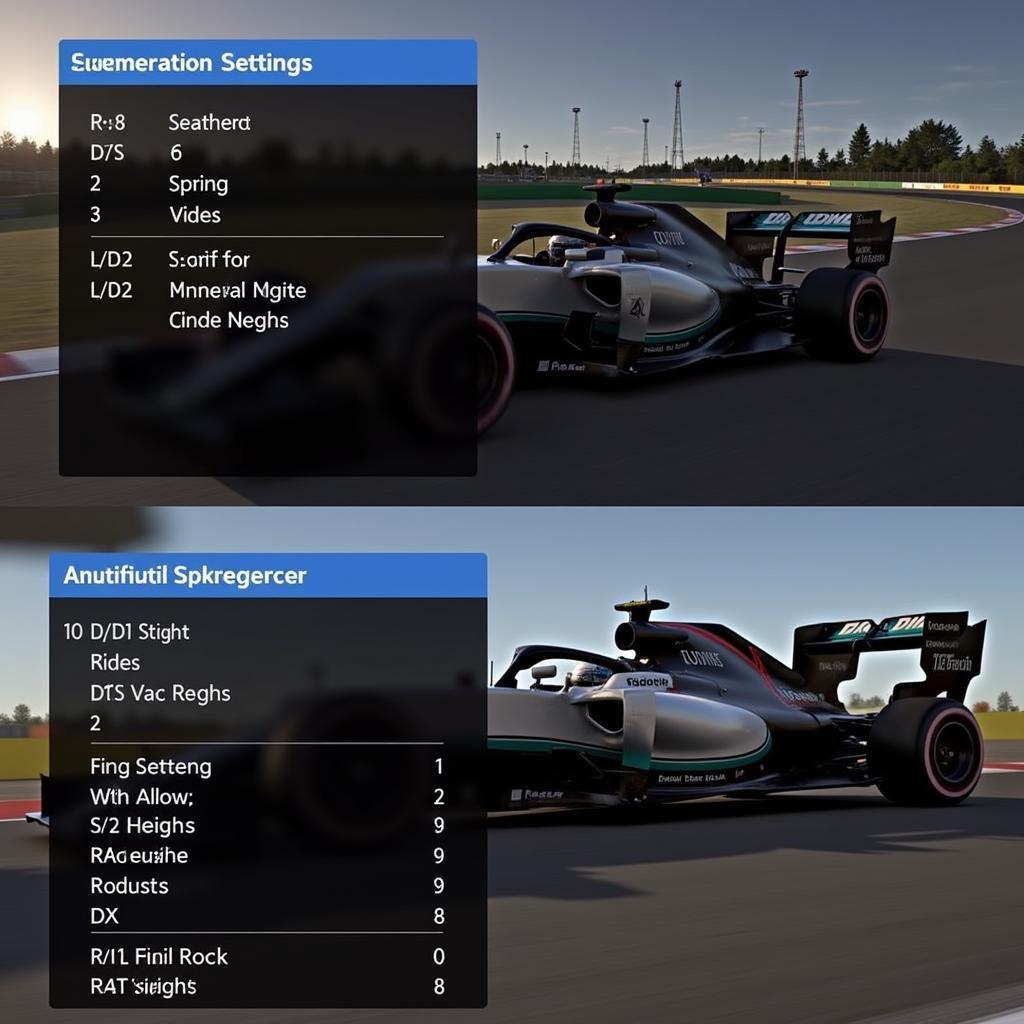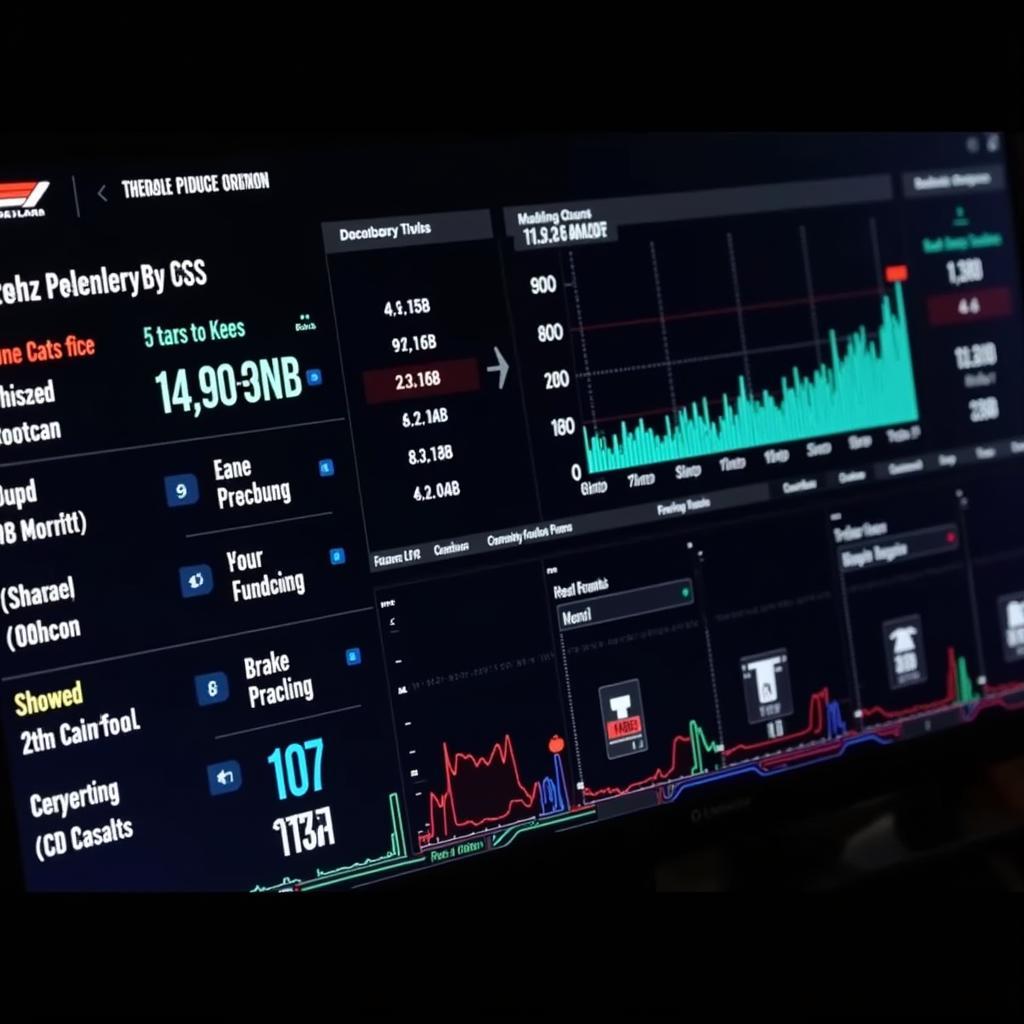F1 24 Track Setups are crucial for shaving seconds off your lap times and dominating the competition. Whether you’re a seasoned pro or a rookie just starting out, understanding how to fine-tune your car for each circuit is essential for success. This guide will delve into the intricacies of F1 24 setups, providing you with the knowledge and tools you need to conquer every track.
Understanding the Basics of F1 24 Track Setups
Before diving into specific setups, let’s cover the fundamental elements that influence your car’s performance. These include aerodynamics, suspension, brakes, and tire pressure. Each of these plays a significant role in how your car handles through corners, accelerates on straights, and brakes effectively. Tweaking these settings based on the track’s characteristics is key to achieving optimal performance. For those looking for ready-made setups, check out our resources on f1 2024 car setups.
Aerodynamics: Finding the Right Balance
Aerodynamics is about downforce. More downforce means more grip in corners, but also more drag on straights. Finding the right balance between downforce and drag is crucial, especially on tracks with varying corner speeds.
Suspension: Tuning for Stability and Responsiveness
Suspension setup affects how your car handles bumps and kerbs, and influences its overall stability. A stiffer suspension will provide more responsiveness, but can make the car unstable over uneven surfaces. Softer suspension absorbs bumps better, but can feel sluggish in corners.
Brakes: Balancing Bias and Pressure
Brake bias determines how much braking force is applied to the front and rear wheels. Adjusting this bias is important for preventing lockups and optimizing braking performance. Tire pressure also affects braking, as well as grip and tire wear.
 F1 24 Aerodynamics Setup
F1 24 Aerodynamics Setup
Fine-Tuning Your F1 24 Track Setups
Now that we’ve covered the basics, let’s discuss how to fine-tune your setups for specific tracks. Each circuit presents unique challenges, requiring specific adjustments to your car’s setup.
Analyzing Track Characteristics
The first step is to analyze the track’s characteristics. Consider the following:
- Corner Types: High-speed, medium-speed, or low-speed?
- Straights: Long or short?
- Elevation Changes: Significant or minimal?
- Surface: Smooth or bumpy?
Understanding these characteristics will help you determine the optimal setup for each track. If you’re looking for a specific setup for Canada, we have a guide on canada f124 setup.
Making Adjustments Based on Track Analysis
Once you’ve analyzed the track, you can start making adjustments to your car’s setup. For example, on a track with long straights and high-speed corners, you’ll want a lower downforce setup to maximize straight-line speed. Conversely, on a track with tight corners and minimal straights, a higher downforce setup will provide more grip and allow you to carry more speed through the corners. Looking for trainers to assist you? Consider checking out the f1 24 trainer.
 Adjusting Suspension Settings in F1 24
Adjusting Suspension Settings in F1 24
Advanced Techniques for Optimizing F1 24 Track Setups
For those seeking to extract every ounce of performance, consider these advanced techniques:
- Testing and Iteration: Experiment with different setups and record your lap times. Analyze the data and make incremental adjustments based on your findings.
- Utilizing Telemetry Data: Telemetry data provides valuable insights into your car’s performance. Analyze this data to identify areas where you can improve your driving and fine-tune your setup.
“Consistent practice and data analysis are key to mastering F1 24 setups,” says renowned F1 esports coach, Alex Ramirez. “Don’t be afraid to experiment and find what works best for you.”
Considering External Factors
External factors like weather conditions can also impact your setup. Rain, for instance, requires a completely different approach to setup than dry conditions. You’ll need to increase downforce and adjust your brake bias to maintain stability and prevent aquaplaning. Looking for freebies? Check out our f1 giveaway 2024.
Conclusion
Mastering F1 24 track setups is an ongoing process of learning and refinement. By understanding the fundamental principles and applying the techniques outlined in this guide, you’ll be well on your way to achieving faster lap times and dominating the competition. Remember to analyze track characteristics, experiment with different settings, and utilize telemetry data to optimize your performance. As Lewis Hamilton once said, “Success in F1 is about meticulous preparation and attention to detail.” You can also reference previous setups, such as the f1 23 singapore setup, for inspiration.
 Analyzing Telemetry Data in F1 24
Analyzing Telemetry Data in F1 24
FAQ
- What is the most important aspect of an F1 24 track setup?
- How does downforce affect my car’s performance?
- How do I adjust brake bias in F1 24?
- What is telemetry data and how can I use it?
- How do weather conditions affect my car’s setup?
- What are some common mistakes to avoid when setting up my car?
- Where can I find more resources on F1 24 track setups?
Common Setup Issues
Some common setup issues include oversteer, understeer, and brake lockups. These can be addressed by adjusting your aerodynamics, suspension, and brake settings.
Further Exploration
Explore other articles on our website related to F1 24 car setups, driving techniques, and race strategies.
For support, contact us at:
Phone: 0902476650
Email: [email protected]
Address: 139 Đ. Võ Văn Kiệt, Hoà Long, Bà Rịa, Bà Rịa – Vũng Tàu, Việt Nam. We have a 24/7 customer support team.





